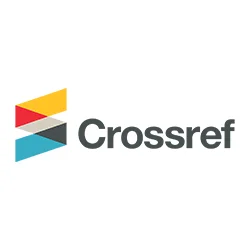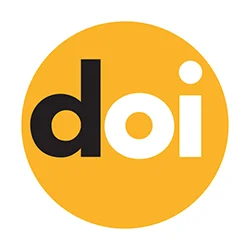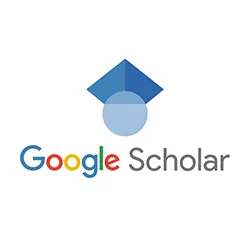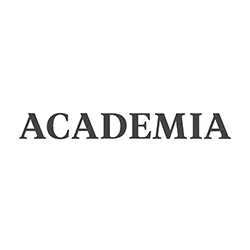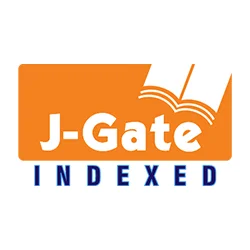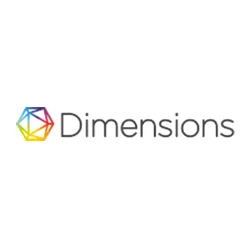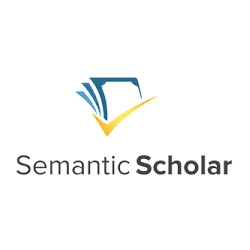The Editorial board is a panel of researchers with expertise in the relevant field. They are appointed by the publishers in consent with the Editor-in-Chief of the journal. Editorial board members are involved in:
Editorial Board Members diligently conduct rigorous peer reviews of submitted manuscripts, ensuring adherence to the journal's policies and scope. Their critical evaluations contribute to maintaining the scholarly excellence and credibility of the published content.
Editorial Board Members take the lead in curating compelling theme issues and hot topics that align with the journal's focus. By identifying trending subjects, they drive the exploration of new frontiers in research, fostering thought-provoking discussions among contributors and readers.
Editorial Board Members actively engage with the scholarly community by extending invitations to potential authors to submit their research. Additionally, they lead by example by contributing their own valuable insights through authored articles, enriching the journal's content with their expertise.
Editorial Board Members play a key role in identifying suitable peer reviewers with specialized knowledge in specific topics. Additionally, they offer valuable second opinions on papers when needed, ensuring thorough and comprehensive evaluations that uphold the journal's rigorous review standards.
Editorial Board Members actively champion the journal's visibility by promoting it among authors, readers, and subscribers. They also inspire their colleagues to contribute their research, thereby fostering a vibrant scholarly community that collectively advances the journal's impact and reach.
Editorial Board Members contribute to the growth of the journal by identifying and suggesting accomplished scholars and experts as potential board members. Their recommendations enhance the journal's editorial team with diverse perspectives and expertise, enriching the overall quality of the publication.
The Editor-in-Chief (EiC) is the leading role of the journal and makes major decisions for developing and promoting the journal. The EiC has considerable knowledge and expertise about the editorial activities of the journal, and is greatly involved in all key procedures of publication.
The EiC is responsible for maintaining and enhancing the journal's scholarly reputation by ensuring that all published articles meet the highest standards of quality, accuracy, and academic rigor.
The EiC plays a pivotal role in the development and continuous refinement of the journal's editorial policies, including ethical guidelines, author guidelines, and peer review processes.
The EiC should actively engage with the broader academic and research community, attending conferences, workshops, and events to promote the journal, attract submissions, and stay updated with emerging trends.
The EiC should facilitate effective communication between the editorial team, authors, reviewers, and readers to ensure transparent and efficient editorial processes.
In situations where conflicts or disputes arise, the EiC should serve as a mediator to find amicable solutions that uphold the journal's integrity and reputation.
Encouraging innovative approaches to publishing, such as multimedia content, interactive elements, and data visualization, can help enhance the journal's appeal and reach.
The EiC can play a mentoring role for junior members of the editorial team, providing guidance, support, and opportunities for their professional growth.
The EiC can actively seek collaborations with institutions, organizations to foster knowledge exchange and cross-disciplinary research.
The Editor-in-Chief initiates and contributes to special issues, enhancing the journal's impact through curated topics and insightful articles that enrich the scholarly discourse.
Scholarly Summit adheres to a strong ethical foundation in scholarly publishing. Our commitment to ethical practices ensures the integrity of the publishing process. Our journals are dedicated to maintaining high standards of ethical behavior by authors, reviewers, and editors. Our editorial staff is well-trained to identify and address ethical concerns effectively.
Our editorial office diligently investigates ethical matters our readers raise in line with established procedures. The Editorial Board is responsible for addressing disputes related to the validity of research reported in published papers. In cases involving authorship disputes, data ownership, or author misconduct, we may engage external organizations, such as university ethics committees, for resolution. Authors are expected to respond to substantiated allegations as needed.
We uphold the highest ethical standards in publishing. Plagiarism, data fabrication, and falsification are strictly prohibited. Authors are required to submit original work, cite sources appropriately, and adhere to ethical guidelines.
Authors should have contributed significantly to the research presented. All contributors should be acknowledged appropriately. Any potential conflicts of interest should be disclosed.
Authors retain the copyright of their work and grant us a license to publish. We publish under open-access licenses to ensure broad dissemination of knowledge while respecting author rights.
We support open-access publishing to make research freely accessible. Authors may choose open-access options, ensuring their work reaches a wider audience.
We encourage authors to share data and materials supporting their findings. Transparent reporting enhances reproducibility and credibility.
We are committed to rectifying errors promptly. Corrections and retractions will be issued as necessary.
Authors, reviewers, and editors must disclose any conflicts of interest that may compromise objectivity. Transparency is essential to maintain the integrity of the review process.
Authors have the right to appeal editorial decisions. Disputes are handled objectively and transparently, following established procedures.
We respect the privacy of authors, reviewers, and readers. Personal information is treated confidentially and used only for journal-related purposes.
Editors make decisions based on academic merit without influence from advertisers, funders, or other parties. Decisions are transparent and impartial.
We are committed to diversity and inclusivity. We welcome submissions from all researchers, regardless of background, and ensure fair and unbiased treatment.
Reviewers must provide constructive, unbiased, and timely feedback. Confidentiality of manuscripts and reviewer identities is maintained.
Authors and stakeholders may raise concerns through a formal appeals or complaints process. These concerns will be addressed promptly and objectively.
We value feedback from authors, reviewers, and readers. We are committed to ongoing improvements in our processes and the excellence of our publications.
These editorial policies ensure a transparent, ethical, and high-quality publication process. Authors, reviewers, and readers must familiarize themselves with these policies to ensure a smooth and ethical publishing experience.
Before submitting your manuscript, please ensure the following:
Authors are encouraged to adhere to the following guidelines when reporting their research:
To submit your manuscript to Scholarly Summit, utilize our dedicated online submission system available at https://scholarlysummit.com/submit-your-article. The corresponding author is tasked with the submission and will work closely with the Editorial Office throughout the process. Prior to submission, the corresponding author must confirm that all authors listed adhere to the authorship criteria outlined by the International Committee of Medical Journal Editors (ICMJE) and COPE.
During manuscript submission, the corresponding author is required to include a cover letter, outlining the manuscript's significance. This letter should affirm, on behalf of all authors, that the submission is original and not under consideration or published elsewhere. Additionally, it should confirm agreement among all authors regarding authorship and state the absence of disputes. Please disclose any potential conflicts of interest or concerns regarding journal policies in the cover letter as well.
Authors should aim for a concise title for their manuscript, ideally spanning 10-15 words and directly reflecting the research topic. It's advisable to refrain from using abbreviations or shortened forms. Kindly adhere to these guidelines when crafting your submission's title.
The title page of the manuscript should list the full names of all authors, accompanied by their current affiliations, digital identifiers, and email addresses. Ensuring the accuracy and completeness of this information is essential for efficient communication and appropriate attribution.
Please organize your article into distinct, numbered sections. Subsections should be labeled as 1.1 (and then 1.1.1, 1.1.2, and so on), 1.2, and so forth. Note that section numbering excludes the abstract. Utilize this numbering system for internal cross-references, avoiding vague references to 'the text'. If necessary, provide concise headings for each subsection, ensuring each heading begins on a separate line.
While optional, we strongly encourage authors to include this section, as it could enhance the visibility of your articles. We invite you to summarize the key points of your article in 3 to 5 bullet points, enhancing its discoverability on search engines. These highlights should be submitted as a separate, editable file using 'Highlights' in the filename or provided as a distinct section within the manuscript. Utilizing 3 to 5 bullet points, each within 85 characters (including spaces), can significantly enhance your article's online visibility.
The abstract of a research article should be concise, adhering to a strict 350-word limit. It should include a brief introduction, presentation of results, and a succinct discussion. Avoid citing references within the abstract and refrain from using abbreviations.
Incorporate a minimum of 6-8 keywords in the manuscript that are directly relevant to the topic. Choose specific keywords and steer clear of generic terms such as disease, climate, environment, etc.
The introduction serves as the initial section of the manuscript, providing an explanation of the significance and background of the topic under discussion.
This section should furnish details pertaining to the "Materials and Methods" employed in the research, including the original data source, materials utilized, study aim, design, and setting. Provide a comprehensive description of processes, interventions, and comparisons within the materials and methods section of the manuscript.
This section should encompass the main and significant findings of the study. Results of statistical analysis can be presented within the text or referenced in tables or figures.
Authors are encouraged to interpret the results in the context of previous studies and working hypotheses. Discuss the findings and their implications broadly, highlighting the limitations of the work. Future research directions may also be suggested. This section, "Discussion," may be merged with the Results section.
Provide a concise summary of the entire article under the section "Conclusion."
If the manuscript contains abbreviations, their full forms should be provided initially. Authors are advised to include a comprehensive list of these abbreviations along with their full names under the section "List of Abbreviations," which should be placed at the end of the article.
Every research article should encompass the following sections:
All references cited within the figures, tables, or text must also be included in the reference section of the manuscript.
If there are 6 or fewer authors, include the names of all authors. For references with more than 6 authors, list the names of the first 6 authors and then use "et al." to represent the remaining authors.
Include the DOI (Digital Object Identifier) for all cited articles at the end of your references.
Abbreviate authors' first and middle names to initials, and provide the complete surname.
In your reference list, include only articles that have been published or accepted for publication. For published articles, provide the page numbers or article numbers. For accepted articles that are pending publication, indicate their status as "In Press" within brackets. It's important to note that Scholarly Summit discourages citing data that is still under peer review by any publisher.
The Vancouver style adheres to a citation-sequence system, wherein the references in the final section of your paper are numerically ordered in the same sequence as they are cited in your text. This differs from the conventional method of arranging references alphabetically by author.
Reference Citations Within Text
References in the Vancouver style are cited numerically and enclosed within square brackets. For a single reference, it is cited as [1]. When citing two or more references, they are separated by a comma, and a lower number is written first, such as [1, 5]. When referencing a range of sources, a hyphen is used to denote the range, like [1-15].
If the number of authors is 6 or less, all authors' names need to be mentioned. However, if there are more than 6 authors, the names of the first 6 authors will be listed, followed by 'et al.' for the remaining authors.
Mark J, ALex B, Johnson LJ. Comparisons through the mind’s eye. Cognition 1975;37(2):635-47.
Cannon S, Charl D, Jeremy M, Ozger N, Marino C, Chen J, et al. Rapid Ca2+ -dependent NO-production from central nervous system cells in culture measured by NO-nitrite/ozone chemoluminescence. Brain Res 1997;748:1–11.
Edited Book:
Gabriela AR. The mind of a mnemonist [Solotarof L, Trans.]. New York: Avon Books; 1969 [Original work published 1965].
Chambers S, Lena CR, editors. Bilingual education: teaching English as a second language. New York: Praeger; 1980.
Book Chapter:
Gazit TE. Gastric emptying of a nutritionally balanced liquid diet. In: Daniel EE, editor. Proceedings of the fourth international symposium on gastrointestinal motility. Vancouver (British Columbia, Canada): Mitchell Press; 1974. p. 83-92.
Xiaowei MJ, Ivan BE, Kim SK. Interface friction and energy dissipation in soft solid processing applications. In: Dowson D, Taylor CM, Childs THC, Godet M, Dalmas G, editors. Dissipative processes in tribology. Dowson D, editor. Tribology series, vol. 27. Amsterdam: Elsevier; 1994. p. 223-34.
Patents:
Mullennix M, John RK, Diana SP, Christiana S. Method and system for machine learning model testing and preventive measure recommendation. US Patent 11805137, 2023.
Conference Proceeding:
Published:
Anderson JC. Current status of chorion villus biopsy. In: Tudenhope D, Chenoweth J, editors. Proceedings of the 4th Congress of the Australian Perinatal Society; 1986. Brisbane, Queensland: Australian Perinatal Society; 1987. p. 190-6.
Rice AS, Farquhar-Smith WP, Bridges D, Brooks JW. Canabinoids and pain. In: Dostorovsky JO, Carr DB, Koltzenburg M, editors. Proceedings of the 10th World Congress on Pain; 2002 Aug 17-22; San Diego, CA. Seattle (WA): IASP Press; 2003. p. 437-68.
Unpublished:
Patrias K. Computer-compatible writing and editing. Paper presented at: Interacting with the digital environment: modern scientific publishing. 46th Annual Meeting of the Council of Science Editors; 2003 May 3-6; Pittsburgh, PA.
Rao RM, Lord GM, Choe H, Lichtman AH, Luscinskas FW, Glimcher LH. The transcription T-bet is required for optimal proinflammatory trafficking of CD4+ T cells. Poster session presented at: 25th European Workshop for Rheumatology Research; 2005 Feb 24-27; Glasgow, UK.
In a manner similar to the Vancouver style, the ACS style also adheres to a citation-sequence system, where the references in the final section of your paper are numerically ordered in the same sequence as they are cited in your text. This system differs from the conventional method of arranging references alphabetically by author.
Reference Citations Within Text:
In the text section of the manuscript, references should be cited numerically, placed in italics, and listed in sequential order. When a reference is cited at multiple locations within the text, it should retain the same number assigned to it upon its initial mention, and no new number should be assigned. If more than one reference number is cited at a single location, these numbers should be presented in ascending order and separated by commas.
Paivio, A.; Jansen, B.; Becker, L.J. Comparisons through the mind’s eye. Cognition, 1975, 37(2), 635-647.
Weikert, S.; Freyer, D.; Weih, M.; Isaev, N.; Busch, C.; Schultze, J.; Megow, D.; U Dirnagl, D. Rapid Ca2+ -dependent NO-production from central nervous system cells in culture measured by NO-nitrite/ozone chemoluminescence. Brain Res., 1997, 748,1–11.
Luria, A.R. The mind of a mnemonist [Solotarof L, Trans.]; Avon Books: New York, 1969.
Letheridge, S.; Cannon, C.R. Bilingual education: teaching English as a second language; Praeger: New York, 1980.
Adams, M. J.; Briscoe, B. E. and Sinha, S. K. Interface friction and energy dissipation in soft solid processing applications. In: Tribology series: Vol. 27. Dissipative processes in tribology; Dowson, D., Series Ed. and Dawson, D., Taylor, C. M. Childs, T. H. C., Godet, M. and Dalmas, G. Vol. Eds.; Elsevier: Amsterdam, 1994; pp 233-234.
Shukla, M.; Vasu, R.K.; Lodha, S.P.; Seetharaman, S. Method and system for machine learning model testing and preventive measure recommendation. U.S. Patent 11805137, 2023.
Ramakrishnan, N. Real-time sample aspiration fault detection and control. WIPO Patent Application WO/2023/288230, 2023.
Douglis, F.; Ball, T. Tracking and viewing changes on the web. In Proceedings of the 1996 USENIX technical conference, 1996.
For submitting manuscripts, the preferred file format is Microsoft Word, either in DOC or DOCX format. Editable files are essential for the review and production process. If you initially submit a non-editable file, you will need to resubmit your manuscript in a Word file.
Consider the following points:
In accordance with the regulations detailed in the Image Manipulation section of our Ethical Guidelines, authors must obtain permission prior to incorporating copyrighted figures or any segment of a figure or table, ensuring strict adherence to the requirements of relevant licenses.
Figures should be positioned near the corresponding text rather than at the beginning or end of the document, and citations of figures within the text should follow a sequential order. Figures with multiple parts should be consolidated into a single file containing all components (a, b, c, etc.), with each figure not exceeding 10 MB in size. When utilizing graphs, labels including units should be provided for each axis.
If the manuscript is submitted in LaTex format, figures should be submitted in PDF. Following acceptance of the paper, separate figures may be necessary for production purposes.
Authors are reminded to obtain approval from the original copyright holder if figures are reproduced from any published content.
As the final manuscript version will be in PDF format, figures must be prepared to align with this format.
Resolution: Ensure figures have high resolution (typically 300 dots per inch or DPI) to maintain quality when printed or viewed on-screen. Verify resolution by enlarging the figure to 150%. Blurriness indicates insufficient resolution.
Font Size: Ensure text, labels, or legends in figures are legible at expected dimensions. A font size of 8-10 points is usually suitable.
For Vector drawings, provide EPS or PDF. Chemical structures should be prepared in CDX (ChemDraw).
Figure Captions: Captions should consist of a concise text title separate from the figure. Provide minimal descriptions with explanations for abbreviations and symbols used.
Scholarly Summit supplementary material alongside articles to enrich content and provide readers with valuable resources. For manuscripts with innovative or extensive methodology sections, we encourage the inclusion of supplementary online materials, such as equations, data treatment methods, syntax code, example data, code books, case descriptions, research context, and detailed narratives. Additionally, images, sound clips, and method applications can further enhance your work.
If any changes are necessary for the provided supplementary file, please submit a completely new file rather than providing a correction list or annotating corrections on the previous version. It's important to note that supplementary files are published as provided, and no formatting is applied from the Publisher's side.
Please be advised that supplementary material will not be incorporated into the manuscript but will be linked on our website in the format provided by the author.
It's essential to ensure that each additional file represents a single table, figure, or movie. Please avoid uploading linked worksheets or PDF files larger than one sheet. All supporting or supplementary materials should be consolidated into a single zipped file, not exceeding 4 MB in size. For data sheets, we recommend using Word, Excel, CSV, CDX, FASTA, PDF, or Zip formats. Presentations are best provided in PowerPoint, PDF, or Zip files. Images can be submitted in CDX, JPEG, EPS, TIFF, or PNG formats.
For supplementary audio files, kindly provide them in MP3 format, and for videos, use MOV, MPG, AVI, or MPEG formats. Supplementary images must be in 300 DPI, and RGB color mode should be utilized.
Prior to manuscript submission, authors are encouraged to have their work reviewed by a native English speaker or to utilize professional language editing services. This helps minimize the risk of rejection due to language inconsistencies. Manuscripts containing grammatical or typographical errors will be deemed ineligible for publication and will be returned to the author with a recommendation for correction before further consideration in the publication process. Authors are encouraged to seek professional editing services to address any language inconsistencies and errors in their manuscripts.
The journal Interdisciplinary Social Research is an academic journals online that aims to provide dissemination of original research papers and reviews of related existing literature that emphasizes the complex interactions between different branches of social sciences. In this regard, the journal aims to enhance unique perspectives from professionals of various disciplines to address emerging multifaceted issues that affect global societies.
It is a multi-disciplinary journal, accepting papers from any field of specialization like sociology, anthropology, politic science, economics, psychology, education, geography, law and cultural studies and so on. The purpose is to create the opportunities for interdisciplinary exchange among scholars and to provide the intellectual space for producing new Ideas and/or evidence that contribute to the advancement of theory and knowledge of human behavior, social organization, and world affairs.
Interdisciplinary Social Research seeks to do away with compartmentalization of scholars by discipline, and to harness collective efforts in addressing many of the challenging issues which confront society in the present day. The journal also has the added focus towards work that leads to the creation of such knowledge and produces policy implications.
| First Decision | 20 days |
| Final Decision | 45 days |
| Publication Type | Peer Reviewed |
| Publishing Model | Open Access |
| Journal Category | Social Sciences & Humanities |
| Publication Issues Frequency | Biannually |
| APC | $300 |
